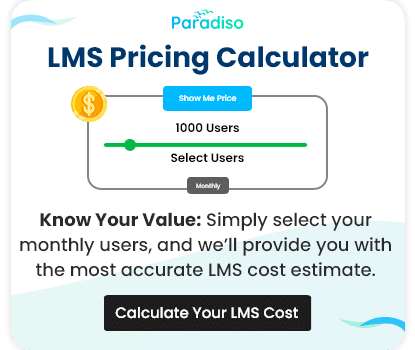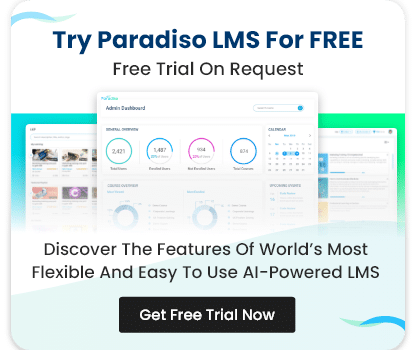In today’s digital era, e-learning has grown in popularity and has become a standard in education and training programs across the globe. Whether for academic institutions or corporate training, an effective online learning experience requires not just well-crafted content but also a reliable way to deliver, track, and manage that content. This is where SCORM comes into play.

What is SCORM and How it Works
SCORM, which stands for Sharable Content Object Reference Model, is a collection of standards and specifications for web-based e-learning. It acts as a bridge between course content and learning management systems (LMSs), ensuring that courses can be easily shared, reused, and understood by any compliant LMS. But what does that mean in practical terms? How does SCORM actually function, and why has it become so integral in the e-learning sector?
This article will delve deep into SCORM, its origins, its components, and its workings, illuminating the crucial role it plays in modern online education.
What is SCORM?
SCORM is like the “universal language” for online courses. It’s a set of rules that ensures online learning materials and the systems they run on (like websites or apps) understand each other and work well together. This means that if a course is designed using SCORM rules, it can be used on many different learning platforms without any problems. Think of it as making sure a phone charger can fit into outlets in different countries; SCORM does something similar for online learning.
How does SCORM work?
SCORM works as a translator between online courses and learning platforms. When a course is made using SCORM guidelines, it comes with a set of instructions. These instructions tell the learning platform how the course should be displayed, how to track a user’s progress, and how to save scores or results. This ensures that learners have a consistent experience, no matter which platform they’re using. In simple terms, SCORM ensures that the course “talks” to the system correctly, making sure users can learn smoothly and effectively.
Benefits of Using SCORM Explained
Certainly! Let’s delve deeper into the advantages of using SCORM:
- Compatibility: One of the primary benefits of SCORM is its promise of interoperability. This means that e-learning content created once can be used across various SCORM-compliant Learning Management Systems (LMS). This eliminates the need to recreate content for different platforms, ensuring that educational or training materials can be distributed and accessed widely with minimal compatibility issues.
- Reusability: SCORM encourages modular content creation. This means individual learning objects or modules within a course can be reused in different courses or contexts. For instance, a module on “Basic Math Operations” can be part of a larger math course and also be reused in a financial literacy course without having to recreate it.
- Consistency: With SCORM, learners get a uniform experience regardless of the platform or device they’re using. This is crucial for educational equity, ensuring that every learner, regardless of their technological access, gets the same content and functionalities. It reduces the discrepancies in user experiences that might arise due to platform-specific content creation
- Tracking: One of SCORM’s significant technical achievements is its ability to track a learner’s interactions with the content. This isn’t limited to just completion rates or test scores. It can track time spent on modules, interactions within the content (like responses to individual questions), and even the path a learner takes through a course. Such granular tracking provides educators and trainers valuable insights into learner behavior and content effectiveness.
- Cost-Efficient: Developing e-learning content can be resource-intensive. With SCORM’s compatibility and reusability features, institutions or organizations can save substantial amounts by avoiding the need to redesign or recreate content for different platforms or courses. Over time, these savings add up, making SCORM not only an educational boon but also a financially smart choice.
Are there different types of SCORM
Yes, there are different versions of SCORM, each refining and improving upon its predecessors. Here’s a brief overview:
- SCORM 1.1: This was the first version of SCORM, introduced in 2001. While it laid the foundation, it had some limitations and was quickly succeeded by a more advanced version.
- SCORM 1.2: Released later in 2001, this version became widely adopted and is still in use in many systems today. It introduced significant improvements over its predecessor, such as better content interoperability and the introduction of metadata.
- SCORM 2004: Also known as SCORM 1.3, this version brought more advanced functionalities. It introduced the concept of sequencing, allowing content creators to define a specific order in which learners should progress through materials. It underwent several editions (1st, 2nd, 3rd, and 4th), with the 4th edition being the most refined and feature-rich.
What Is a SCORM Package?
A SCORM package, often called a SCORM course, is a collection of files that work together to deliver a cohesive learning experience within a SCORM-compliant LMS. These files include the actual e-learning content, such as text, videos, quizzes, and animations, as well as essential metadata and instructions that enable the LMS to understand and deliver the content correctly.
The Future of SCORM
While SCORM has been a foundational standard in e-learning for over two decades, the world of digital learning is continuously evolving, driven by technological advancements and changing educational needs. As a result, the future of SCORM is both promising and challenged by emerging trends and technologies.
- Experience API (xAPI): Also known as the Tin Can API, xAPI is often seen as the next step after SCORM. It offers a more flexible approach to tracking learning experiences, not limited to traditional e-learning. With xAPI, learning experiences from diverse sources like virtual reality, simulations, mobile apps, and even real-world activities can be tracked and analyzed. While it doesn’t necessarily replace SCORM, xAPI represents a broader and more comprehensive approach to learning data collection.
- CMI5: Pronounced as “CMY-five,” it is a standard developed to bridge the gap between SCORM and xAPI. CMI5 uses xAPI’s flexible tracking capabilities but adds specific rules for online course structure, similar to SCORM. This ensures better compatibility and transition for institutions moving from SCORM to more modern standards.
- Increased Demand for Interactivity: Modern learners expect interactive, engaging content. While SCORM can deliver interactive e-learning, emerging technologies like augmented reality (AR), virtual reality (VR), and interactive simulations challenge SCORM’s limits. As these technologies become mainstream, there might be a shift to more flexible standards that can encompass these forms of content delivery.
- Mobile Learning: The rise of smartphones and tablets has led to increased demand for mobile-friendly e-learning. SCORM wasn’t initially designed with mobile in mind, so adapting it for responsive design or mobile app integration can be challenging.
- Global E-Learning Growth: As e-learning becomes more prevalent worldwide, there’s a demand for standards that accommodate various languages, cultural contexts, and accessibility requirements. This might push for more inclusive and adaptable e-learning standards in the future.
Are all SCORM compliant LMSs the same?
No, all SCORM LMS are not the same. While they all adhere to the SCORM standard, ensuring a degree of interoperability and consistency in delivering SCORM content, there are several differences among them in terms of features, user experience, customization options, and more.
Do I need another tool to produce SCORM?
Yes, to produce SCORM-compliant content, you typically require a separate tool known as an e-learning authoring tool. These tools allow content creators to design, develop, and package e-learning materials in a SCORM-compliant format that can be uploaded to a SCORM-compliant LMS.
Here are some points to consider:
- Authoring Tools: These are specialized software applications designed to facilitate the creation of e-learning content without requiring extensive technical knowledge. Examples of popular SCORM-compliant authoring tools include Articulate Storyline, Adobe Captivate, and Paradiso Composer.
- Packaging and Exporting: Once your e-learning content is created, the authoring tool allows you to package or export your course in a SCORM-compliant format. This usually results in a .zip file (the SCORM package) that contains all necessary files and the manifest file, which can be uploaded to an LMS.
- Testing and Validation: Before deploying your SCORM content on an LMS, it’s a good practice to test the package using a SCORM cloud service or a testing environment to ensure compatibility and functionality. Some authoring tools may offer built-in testing features, while others might require you to use external services.
- Versatility: Modern authoring tools often support multiple e-learning standards. This means that, in addition to SCORM, you can also produce content compliant with other standards like xAPI, AICC, or cmi5, if your LMS or learning strategy demands it.
- Multimedia Integration: Many authoring tools come equipped with features that allow for the seamless integration of multimedia elements, such as video, audio, animations, and interactive quizzes, making the e-learning experience richer and more engaging.
Conclusion
To produce SCORM-compliant content, one typically requires an e-learning authoring tool, which facilitates the creation, packaging, and testing of e-learning materials. While LMSs deliver and manage this content, authoring tools ensure it’s designed and structured to SCORM standards, ensuring seamless integration and consistent learner experiences.










